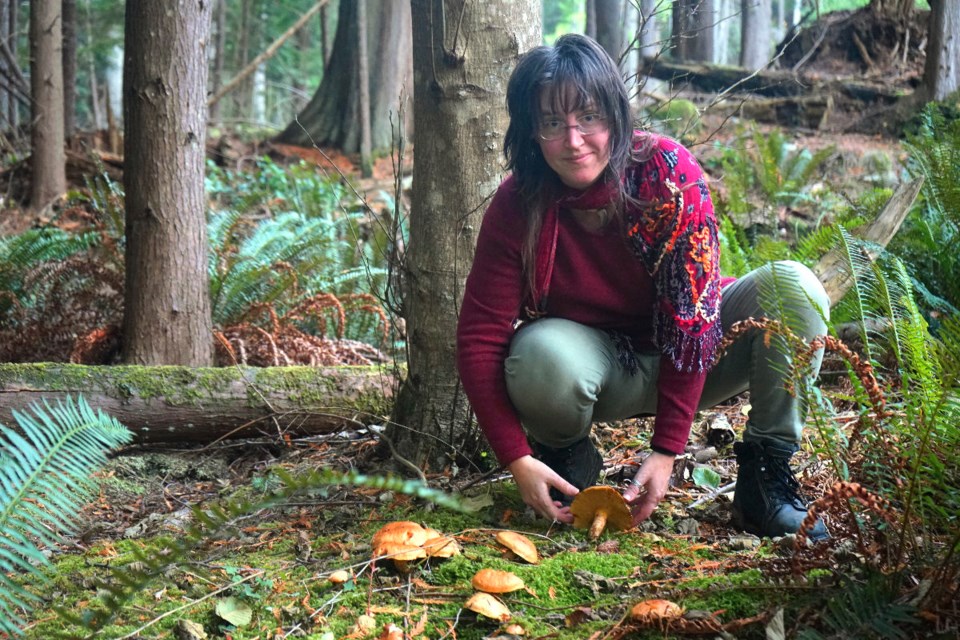I can still remember my mother’s face when I told her I’d burned my hands because we were poor. She laughed. Her beautiful crescent moon of a smile looked loving and full of joy. What!?
“Mum! They burned my hands right through the plastic bag! Look — I have a hole in my thumb!”
She carried on smiling, as I put my small basket of nettles onto the counter beside my brother’s. And I sulked away to my room, so sad that we had to pick vicious harmful plants from under the maple tree for our dinner. They do taste good braised with a little salt or butter, though. We eat them every spring.
And it wasn’t until I was an adult that I remembered this event and laughed, myself. We don’t pick nettles because we‘re poor — we pick nettles because we were rich. Same with licorice fern roots, ladyfern fiddleheads, sourgrass, maple blossoms, and all kinds of wild berries and mushrooms. I grew up on this island with the taste of wild foods in my mouth, and the feeling of being part of my own ecology. That is a wealth I’ve spent my whole adult life sharing with my own kids, and others.
We’re unbelievably lucky to live where we do. Our ecology is somewhat protected by way of being separated from the mainland. So while we do have increasing impacts from invasive species and development, we still have quite a rich diversity of life, here.
Did you know we have freshwater sponges, clams, and crayfish in Killarney Creek? We do! And a simply enormous assortment of edible greens, at this time of year. Later on it will be time for wild needle teas and fresh berries. Later again, mushrooms. And when the winter starts rolling in it will be time to harvest roots.
So can we all survive on wild food, here? Definitely not. As I mentioned, we have an increasing pressure from development, and there has always been commercial harvesting happening here, which decimates what we have. Sure, you can go pick a great bunch of nettles for dinner, and they’ll grow back next month, to still flower and seed, come fall. But there aren’t enough for all of us, partly because our culture is now accustomed to waste and over-consumption.
Eating wild food needs to be looked at through a lens of conservation: Take a little, and leave a lot behind. A really great way to eat wild food sustainably is to encourage it to grow in your own yard, or even on your balcony or doorstep, if you don’t have a yard. You’ll learn to harvest in such a way that it keeps coming back, and you’ll always have more on the way.
I now have a nearly year-round supply of sheep sorrel and miner’s lettuce growing in planters on my porch. But I still go out to pick in the wild, too. Partly because it keeps me connected to my own ecology. And it makes me happy.
I’ll be leading a couple of 2-hour walking tours this spring, if you’d like to learn more about the ecology of our home, and what parts of it are edible (and poisonous!)
I highly recommend doing both tours. They’re five weeks apart for a reason: It gives us a chance to see how things change as the season progresses, and to discover new plants and new ways of using the plants we already know.
Wild Food Tours with Emily starts this Sunday, March 30 from 2 to 4 pm. The next session is on May 11, also from 2 to 4 pm. You can register by contacting me, Emily, at [email protected] or by calling 604-947-9563.



